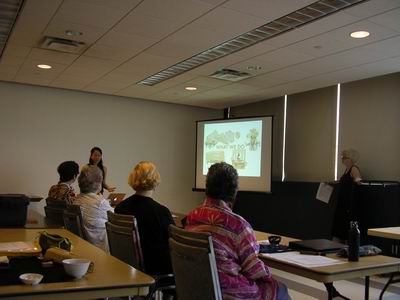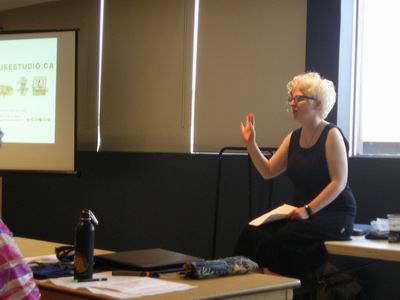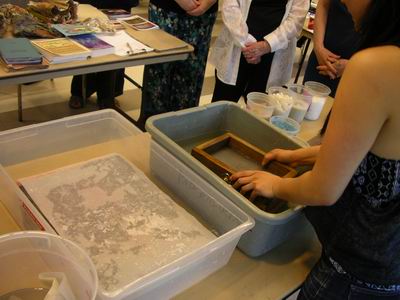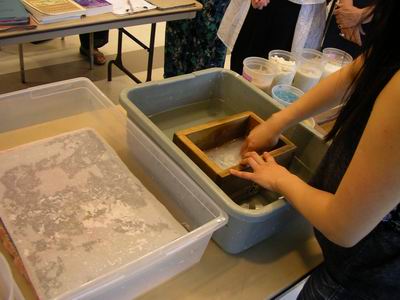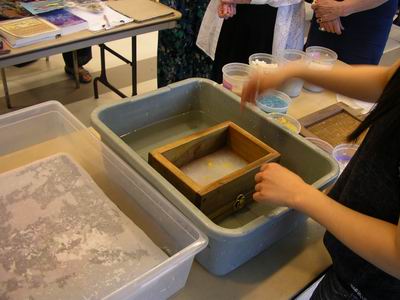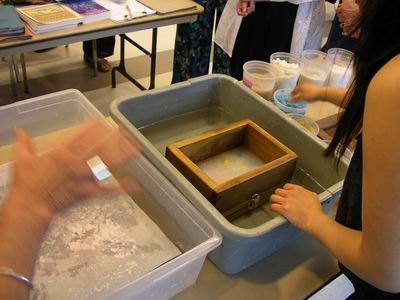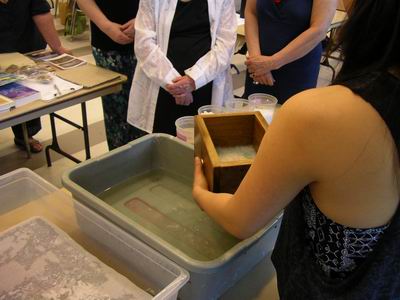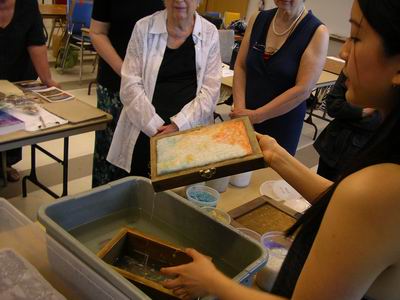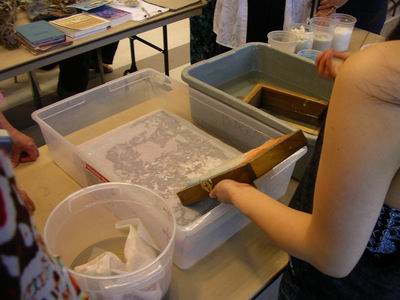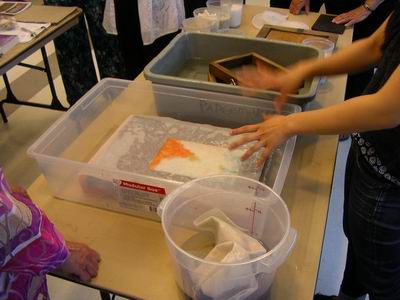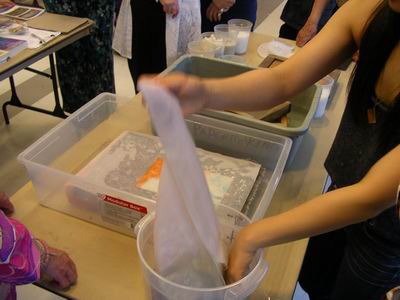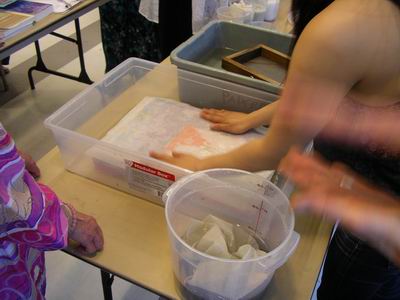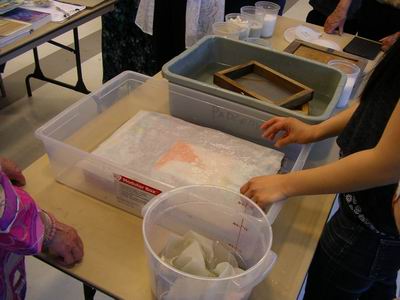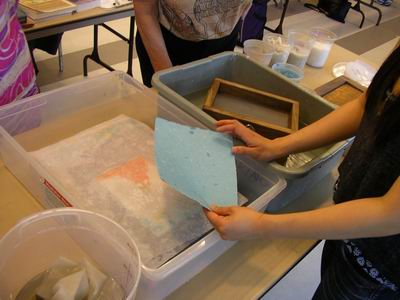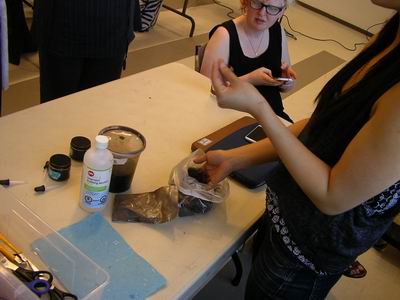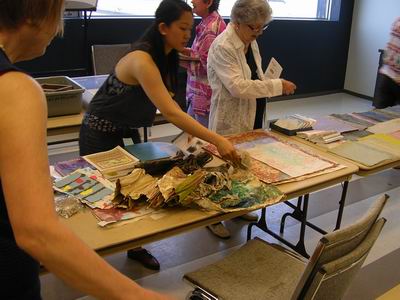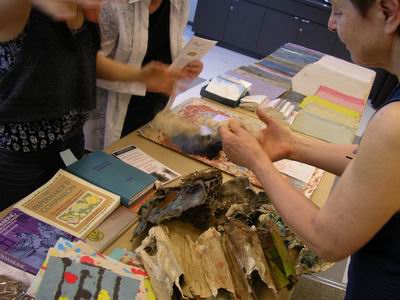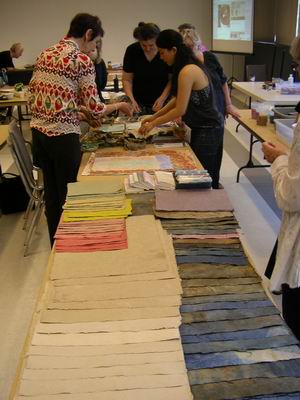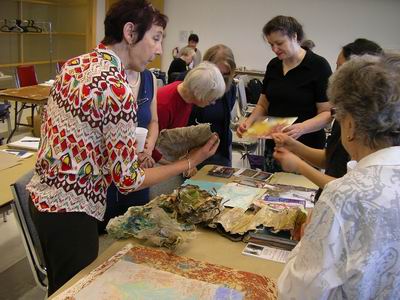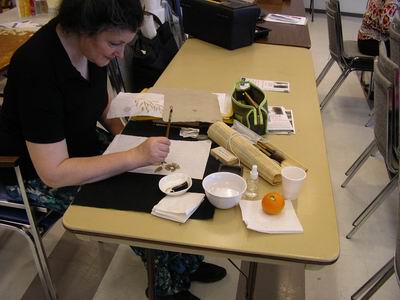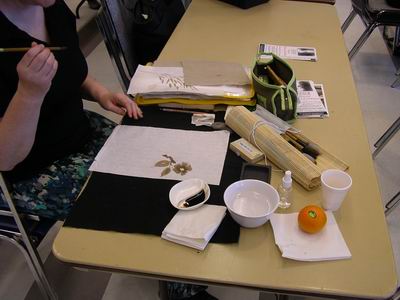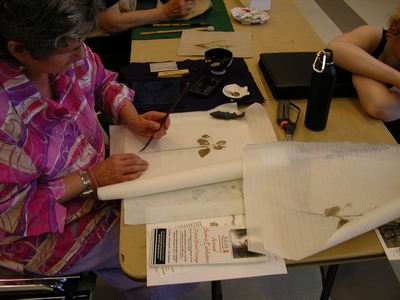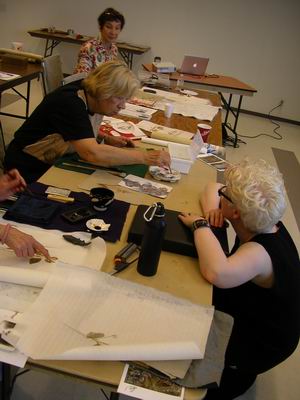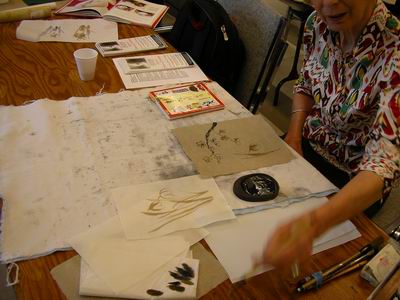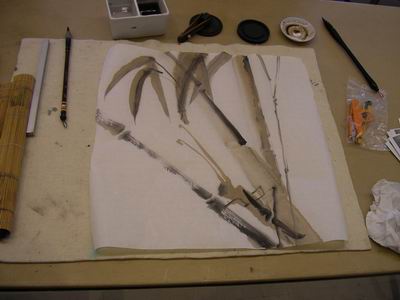Paperhouse Studio with Emily Cook and Flora Shum - May 9th, 2015
The Paperhouse Studio makes paper and teaches others how to make paper. Flora Shum showed a presentation about how Paperhouse Studio partners with artists interested in the paper medium and others like ourselves interested in learning how to make paper.
Emily Cook then walked us through several hundred years of the development of paper. In 200 BC, paper started to become the medium to write on, paint with, and record business transactions. Paper making spread throughout the world and today paper continues to be a medium used by artists, business people, and governments to communicate and express ideas.
Making paper consists of putting fibres onto a screen immersed in water. There are many kinds of fibres including cotton, flax, hemp, kozo. Each type of fibre produces a different type of paper with a range of absorbancy.
The equipment you need is a wooden frame with a mold and deckle. The mold is at the bottom of the wooden frame and holds the pulp. The deckle is at the top. It controls the shape of the paper.
Creating the paper is a physical experience! Put your hands in the water and feel the fibres until an even spread of the fibres is at the bottom. Shaking and draining the water is part of the experience!
Flora and Emily had brought dyes to add to the paper. The result is paper the way you personally want it.
Draining the water is part of papermaking. In our demonstration, a small box was used, however, for large sheets of paper two people would be needed to handle the draining.
And then our paper appeared though still a bit wet.
To dry the paper takes some time. It is placed faced down on a sheet called a pelon.
The pelons are used to form a stack of paper sheets.
A pelon was placed over the paper just created so we could proceed to our next paper creation.
At this point, the fibres are not completely settled so you need to carefully spread and press the pelon.
Each sheet created is a kind of artistic statement. Workshop participants could see the attraction to papermaking today.
Fibres used by the Paperhouse Studio come from many sources. One paper shown was created from old dollar bills taken out of circulation.
Another demonstration that intrigued workshop participants was a natural ink created from black walnuts. The ink is created in a manner similar to making maple syrup. The black walnuts are boiled in water until the quality of ink you want remains.
The Paperhouse Studio brought lots of paper samples for us to try out.
When it comes to making paper, Flora Shum and Emily Cook are very knowlegeable. However, they brought books for those interested in delving into this art themselves.
Every colour and texture of paper was available to try out. The sumi-e artists liked to feel the paper too.
Each paper sheet was unique because each sheet was hand made.
The black walnut ink was something everyone wanted to try out.
The black walnut ink produced a natural-looking result.
Some artists tried putting the walnut ink on the rice paper sumi-e artists use.
It was interesting to paint on the handmade paper as the texture was so unique that the effect could be startling.
Using sumi-e ink on the handmade paper created a distinctive effect. Often that effect was a sharper contrast than would be found on the rice paper that sumi-e artists usually use.
Another interesting effect was to use the black walnut ink with the sumi-e black ink.
Knowing the types of paper and making your own paper gives the artist more control over the art created on it.
